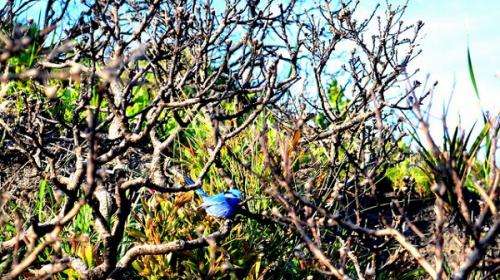Priority Protected Areas key to dieback framework

A new framework to help combat Phytophthora, or dieback in Western Australia's south-west was recently revealed at a conference at Murdoch University.
The State Dieback Management and Invest Framework (SDMIF), spearheaded by Elissa Stewart from the South Coast Natural Resource Management (NRM), is working to identify 100 Priority Protection Areas (PPAs) across south-west WA that are considered vulnerable to Phytophthora.
"Some of the areas included within the indicative top PPAs include Fitzgerald National Park, Cape Arid National Park and Nutysland Nature Reserve in Esperance," Ms Stewart says.
The NRM will implement the framework through assessment of PPAs, risk reduction planning and on-ground work, while a number of other organisations, such as the Department of Parks and Wildlife, the Dieback Working Group and GAIA Resources will help with community engagement and support via a steering committee and project partners.
The Framework will identify and rank PPA that represent significant biodiverse ecosystems and communities threatened by dieback by the end of 2014.
Additionally, the SDMIF will prioritise investment that provides effective protection, conservation and monitoring of the PPAs over the next 50 years.
There are over 50 species of Phytophthora, but the species that causes the most severe and widespread damage to native plants in Western Australia is P. cinnamomi.
More than 50 per cent of Western Australia's rare or endangered flora species are susceptible, which has the potential to affect a number of important industries.
"The south-west of Western Australia is known worldwide for its florist uniqueness which we are slowly losing to Phytophthora dieback," Ms Stewart says.
"The flora attracts state, national and international tourists to the area, so to lose these floristic values will have a negative impact on the tourism industry, particularly eco-tourism."
Professor Giles Hardy, Director of the Centre of Phytophthora Science and Management says researchers could not afford to take the spotlight off Phythophthora and its threat to biodiversity.
"We have known about Phytophthora dieback since the mid-60s, yet humans are still inadvertently spreading the pathogen," Prof Hardy says.
Ms Stewart says Phytophthora can be spread by humans, animals or by root-to-root contact.
"Human activity can cause the most significant and rapid spread of the pathogen through picking up infected soil via boots, vehicles, machinery and stock and moving that soil to uninfected areas," she says.
Read more information regarding the framework here.
Provided by Science Network WA




















